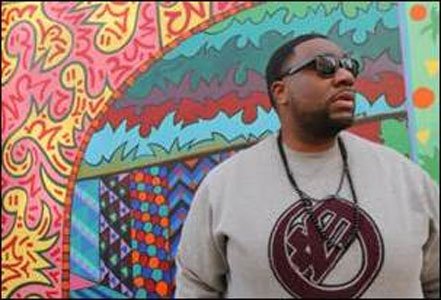For hip-hop star David Rush, formerly known as Young Bo$$, touring the world with such superstars as Pitbull, was only one part of his dream and life goals. He also wanted a wife and children, but kidney failure almost derailed those plans.
“I was very surprised at 24 [when] I was diagnosed,” said Rush, now a producer and the man behind the 2009 hit, “Shooting Star,” which featured Pitbull and LMFAO. He also worked on Pitbull’s popular hit song, “Go Girl.”
“As far back as the 10th grade, I had protein in my urine and so there was some early warning signs but then you go on and go to college and you’re not really worried about doctor’s visits,” Rush said.
However, after graduation, a visit to the doctor’s office revealed alarmingly high numbers, feelings of sluggishness and being sick, he said noting that he was diagnosed with kidney disease and was already in Stage 4 failure.
Now, 33 and more than five years after a kidney transplant courtesy of his brother Dwaine, Rush no longer needs dialysis but is hoping to raise awareness about the fight during National Kidney Month.
According to the National Kidney Foundation African-Americans suffer from kidney failure at a significantly higher rate than whites— more than three times higher.
African-Americans also constitute more than 35 percent of all patients in the United States receiving dialysis for kidney failure, but represent just 13.2 percent of the overall population.
Due to high rates of diabetes, high blood pressure and heart disease, African-Americans have an increased risk of developing kidney failure and need to be aware of the risk factors, making sure to have doctors regularly check blood sugar, blood pressure, urine protein and kidney function, according to foundation officials.
Further, diabetes is the leading cause of kidney failure in blacks and approximately 4.9 million African-Americans over 20 years old are living with either diagnosed or undiagnosed diabetes.
For Rush, who has overcome his kidney issues and has achieved his dream of marriage and the birth of a son and daughter, the road wasn’t easy.
Before receiving the transplant, he was aided by the NxStage System One, the first portable hemodialysis system, which has been cleared for home use by the U.S. Food & Drug Administration.
“The portable home dialysis treatment was something that I stumbled upon,” Rush said.
“I was signed to Pitbull and I wanted to go on tour and I just knew that there was a way because we have too much technology in the world not to be able to do this. I looked it up on Google and found NxStage and found that I could travel with the machine.”
It takes about a month of training to use the machine, but it could be well worth it, said Dr. Byron Welch, a kidney doctor at Satellite Healthcare in Texas. “The payoff has been that you have complete control of the schedule.”
Prescribing NxStage to patients is like allowing them to regain control of their lives and time, according to Dr. Jose Morfin of the UC Davis School of Medicine and a member of the NxStage scientific advisory board.
“The benefits my patients experience, like better blood pressure control, more energy and better mental health, are truly incredible to see,” Dr. Morfin said. “Performing more frequent home hemodialysis with the NxStage System One is definitely superior to convention in-center dialysis.”
Dr. Turan Marwaha, a specialist in internal medicine and nephrology in Orange County, California, said while there are eight companies that make in-home dialysis possible, only two are available in the U.S., including NxStage.
“Patients who are using in-home dialysis have more energy, are able to spend more time with their families and have a better quality of life,” Marwaha said.
Rush said all of his doctors approved of the machine.
“When you’re first diagnosed, you are just in shock. Luckily, I was able to find the treatment and then consult with my doctor about it, get trained and go on tour. It changed everything for me. When I was going in for dialysis and spending five hours there, I still wasn’t coming out clean,” Rush said. “With this machine, I was at home doing three hours and 45 minutes and feeling better. It was acting as a kidney and cleaning me more. I was no longer sluggish and beat up and it allowed me to do a whole tour, an hour set of jumping around. It allowed me to continue my dream.”
